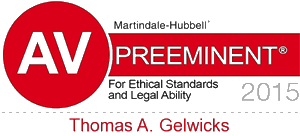Roadway Pooling Water
Water pooling on a roadway can present unexpected danger. This especially is true if the water cover is the result of some variety of man-made negligence. Roads either designed wrong or negligently maintained can cause serious wrecks for which accountability can be shown. However, water the result of natural accumulation is, by law, generally held not to be a basis of liability.
When a driver loses control it is dangerous enough for a single wreck. But if other vehicles are also involved the risk factors are significantly greater.
Causes of Water Pooling
Dangerous roads, as a result of pooling, are often caused by construction crews failing to provide a safe driving context. Retail establishments and other commercial establishments can also create, or knowingly allow, pooled water to exist. When other driving obstructions exist along the route – such as uneven road surface or drainage defects – accidents can be expected.
Many of these varieties of defect are seasonal in southwestern Ohio. Because of the regular rhythm of nature, municipalities are charged with the duty of maintaining safe roads.
Spring thaws, coupled with storm water runoff, promote accelerated erosion that allows for dips and grade changes on once relatively flat driving areas. Storm water runoff can be diverted because of man-made changes, resulting in a once safe road suddenly becoming dangerous to unsuspecting motorists.
Establishing Accountability When Things Go Wrong
When culverts, grates or drains become debris-plugged, as a result of rain or snow, it can be a close issue as to whether road maintenance personnel were responsible. Arbitration panels and juries have to determine if there was a knowing maintenance of a dangerous condition. And, in turn, one that a reasonable driver could not reasonably have anticipated.
Most pooling water danger results in a vehicle either hydroplaning, or being knocked off course, by the effect of a road dip-bump combination. Hydroplaning results when the tires of a vehicle slide atop the road’s surface while on a very thin layer of water. Loss of control can often not be regained, especially if higher speed is involved.
Traffic Reconstruction and Road Maintenance Experts
Nearly all collisions involving pooled water involve the use of expert witnesses in order to establish road defect. The evidence they base their judgments upon must be gathered by a traffic reconstruction expert, soon after the collision has taken place. Photographs and video of the crash scene, in conjunction with many numerical findings, will establish a credible record. This works toward proving that the defendant knowingly maintained the road defect.
Following a collision, the scene can be altered within a few hours. Police, emergency crews and life squad personnel can render the area compromised for later expert evaluation. Additionally, maintenance crews from the local municipality or Ohio Department of Traffic can disrupt the scene evidence. This happens when they attempt to render the area safe for other motorists. Acting swiftly in securing representation can make the difference in whether an effective claim can later be advanced.

